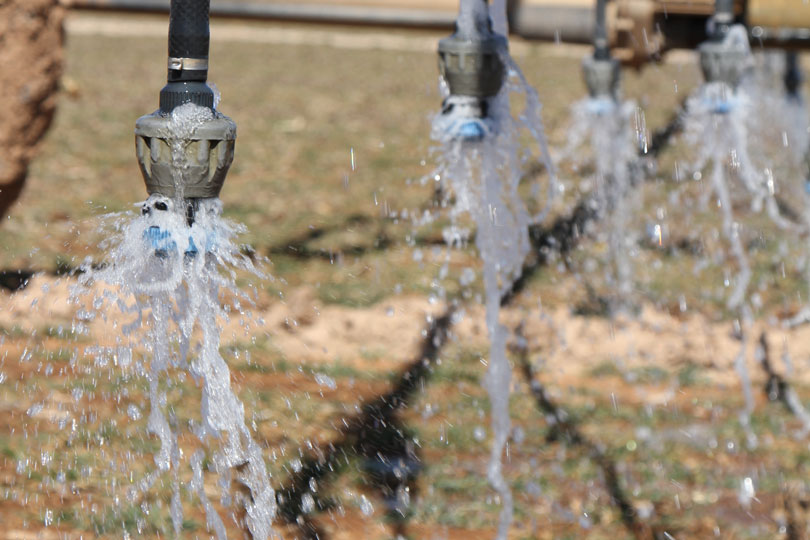By Justin Walker
Communications Specialist
A rising number of irrigation sprinkler repair calls have been made during these winter months due in large part to ice damage.
Daniel Smith, owner of South Plains Irrigation in Olton, Texas, said that growers should take precautions during cold weather, as ice damage is rarely covered by insurance.
“If people are going to be running sprinklers, and truly every manufacturer manual says, ‘Do not run below 34 degrees,’ but if you are going to be running below that, you need to look real close for leaks in and around the tower box controls,” Smith said. “At 34 degrees with a 10 mph wind, the wind chill will drop the temperature below 34 degrees and at that point it starts freezing.”
Smith has already received 50 calls for sprinkler repairs due to ice. His most recent job resulted in $35,000 worth of uninsured repairs.
“Everybody that saw that sprinkler thought that the ice built up on the machine and made it fall but that’s not what happened,” Smith said. “The ice actually built up on that tower box and pulled it down.”
Smith recommends leaving sprinklers alone and allowing the ice to melt if the machine ices up.
“People often make things worse by trying to fix it themselves,” Smith said.
During these cold conditions, Smith recommends growers avoid operating their machines as they would during the summer.
“Be sure to drain the sprinkler at the center pivot point or it will hold water, which can then freeze and split the pipe,” Smith said.
Once the weather begins to warm up, growers should properly clean their machines before summer irrigation begins. First, Smith recommends servicing the drive train.
“When it’s 20 degrees at night and 60 degrees during the day, condensation often builds up on the inside, which will rust out the bearings,” Smith said. “Producers need to be sure to drain the water and check the oil in the gear box.”
Next, inspect the splash pads and nozzles. Growers should then inspect for leaks, which Smith said are easy to spot.
Finally, Smith said to check the tire pressure on the sprinkler tires.
“The recommended pressure is different on different soil types,” Smith said.
He also recommends re-inspecting sprinklers if they have sat idle for a month or longer, even if previously inspected.
A complete maintenance checklist can be found here.

